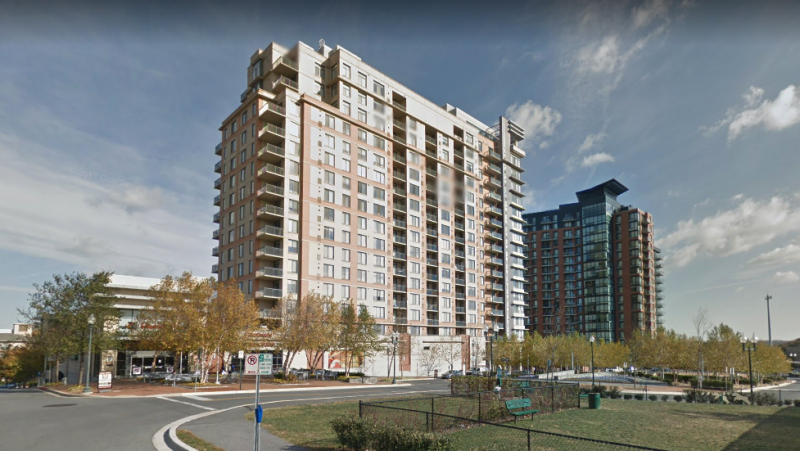Meet the everyday people who own these iconic Washington-area buildings

Tysons Corner Center Tower. Image by Matt’ Johnson licensed under Creative Commons.
Who exactly owns all of those new buildings around town, and where does their money come from? Many of the owners who profit from high-profile real estate developments around Washington might surprise you.
While you may have read the names of developers who splash their logos onto scaffolding and cranes at construction sites, we rarely hear about the companies who ultimately provide the funding to keep all those workers busy. In fact, many are companies whose job is to invest ordinary people's retirement savings.
When we do hear about real estate financiers, it's often in hushed overtones
In a 2015 Guardian article, sociologist Saskia Sassen reported, “We are witnessing an unusually large scale of corporate buying of whole pieces of cities in the last few years,” insinuating that shadowy pools of offshore money are wiping away local sovereignty. Craig Karmin writes in the Wall Street Journal, “Big sovereign-wealth funds, Chinese investors and other buyers have pushed values of office buildings, apartment complexes and hotels to record levels in many top markets in recent years, from New York to Los Angeles.”
The reality is usually less dramatic
It's nearly impossible to precisely examine how money flows when it comes to real estate. For liability reasons, most commercial real estate is held in trusts or private entities. However, many of the investors who buy and sell large buildings in this area do report their activities as a matter of public record. As investors that use other people's money, they have to report to their stakeholders.
Many of those investors are large pension funds, which aggregate retirement savings from millions of individuals into huge pools of money. Almost all of us contribute to at least one pension fund: Social Security. Many public sector employees have pensions, and millions of Americans have private-sector pensions as well.
Real estate in metro DC is a great investment for a pension fund
The region's economy is relatively stable since it's buffered by the federal government. In fact, the federal government is the biggest renter of space in the local office market. This fits pension funds' purposes nicely: They can spend lots of money up front to buy large properties in DC, hold the investment for many years, and can count on a steady and stable flow of rent checks that can later be paid out to their retired pensioners.
In addition, restrictions on new construction here keeps competition muted and prices high. Tenants have a harder time moving to something newer and cheaper. Investors call this situation a “high barrier-to-entry market,” and the fact that they'll pay more for that situation has the perverse effect of raising the price barrier even higher.
DC, Gateway City
Because pensions and other investment funds like to invest in this region, DC is known as one of America's few “gateway cities”. This term is given to areas where, historically, there's always been a ready pool of buyers willing to purchase real estate. That makes investing here less risky than in smaller or more volatile real estate markets. Investors are willing to pay more for that lower risk, which raises property prices. Property owners–whether faraway corporations or local landlords–all benefit from the higher prices. However, local renters and employers, who have to raise wages to compensate, literally pay the price.
This situation isn't new; urban theorist Jane Jacobs identified as a key concern in The Death and Life of Great American Cities. She worried that the then-novel practice of having insurers write big checks for large urban real estate developments would result in sudden, “cataclysmic” changes to urban neighborhoods.
Guess who?
To demystify this not-so-high finance, we made up a few fictional characters who represent a handful of the millions of future retirees who will someday draw pensions from the rents paid at the highest-profile real estate developments around DC.
Anne*, a teacher in Anaheim = North Bethesda Harris Teeter Image by US Department of Education licensed under Creative Commons. North Bethesda. Image by the author.


Teachers in California receive pensions through the California State Teachers Retirement System, whose investments include a 90 percent stake in LCOR, a developer that's active around the region. It's developing the land above the White Flint Metro station into North Bethesda Town Center, including the Nuclear Regulatory Commission offices and the Harris Teeter-anchored Wentworth House.
Elsewhere, LCOR will soon start redeveloping The Commons of McLean, an existing apartment complex east of the McLean Metro station, and has purchased a development site near Union Market.
Robert*, a Mountie in Saskatoon = The Wharf Image by Doug Hay licensed under Creative Commons. The Wharf. Image by Payton Chung licensed under Creative Commons.


Civil and military employees of the Canadian government, including the Royal Canadian Mounted Police, have retirement savings within pension accounts which are co-managed by PSP Investments. PSP is the lead equity investor in the Wharf development, paying 27.5 percent of the bill for the phase now under construction. (The fact that the Wharf is funded by the Canadian federal government, not the U.S. federal government, makes an Iowa congressman's insult of the development particularly puzzling.)
Bank loans will cover half of the construction costs. DC government bonds, backed by the additional property and sales taxes that the Wharf will generate, have paid another 14 percent. Those bonds offset the cost of public amenities that are inseparable from the development including parks, piers, a higher seawall, a riverwalk, a bike trail, and affordable housing.
Roberta*, a courthouse clerk in Tucson = Arris Image by U.S. Navy photo by Steve Vanderwerff licensed under Creative Commons. Yards Park and Arris. Image by Payton Chung licensed under Creative Commons.
_800_534_90.jpg)

Civil servants in Arizona, from the municipal to the state level, receive pensions from the Arizona State Retirement System. ASRS is 75 percent owner of a joint venture with developer Forest City (a Real Estate Investment Trust; see Tysons Corner Center Tower below) to build eight new apartment towers nationwide.
This includes two at Forest City's major mixed-use developments within DC: Arris at the Yards, between the Bluejacket brewpub and Yards Park, and the Eliot at Waterfront Station in Southwest. Another Forest City joint venture, with the state pension plan of Queensland, Australia, is redeveloping Ballston Common Mall in Arlington.
Dr. Wilson*, a professor at Truman State University = The Louis on U Image by Cursinho da poli licensed under Creative Commons. The Louis. Image by Ted Eytan licensed under Creative Commons.


Many people who work in academia (and others; membership is now open to anyone) invest their retirement savings with TIAA. TIAA is a large investment fund originally set up by Andrew Carnegie as a way to underwrite educators' retirements. Participants can choose to direct their savings to the TIAA Real Estate Account, which is one of the largest owners of DC real estate.
Among TIAA's recent purchases in DC are the Louis on 14th, Constitution Square in NoMA, and The Woodley. TIAA is unusual among defined-contribution pension plans in that it directly owns real estate.
Jeanne*, a nurse in Montreal = 801 New Jersey Avenue SE (Ore 82) Image by Steve Pivnick licensed under Creative Commons. Ore 82. Image by Payton Chung licensed under Creative Commons.


Canada's unique brand of federalism means that Quebec runs its own social-security scheme. Those funds, along with Quebec's government pensions, are managed by the CDPQ (Caisse de dépôt et placement du Québec). CDPQ has historically used much of its holdings to facilitate local economic development by taking large stakes in many Quebec-based businesses. It also owns a development firm named Ivanhoé Cambridge, which recently partnered with Greystar (a large apartment manager) to develop 801 New Jersey Ave. SE, a new apartment tower three blocks north of the Navy Yard Metro station.
If you've noticed that this list smells like maple syrup, that's because Canadians invest almost all of their retirement savings through “defined-benefit” pension plans, which have broad latitude in making investment decisions. Americans have shifted to defined-contribution plans whose investments are more diversified, but harder to track, and Social Security solely invests in federal debt.
Marie*, a teacher in Niagara-on-the-Lake = Tysons Corner Center Tower Image by Michelle Collins licensed under Creative Commons. Tysons Corner Center. Image by Matt’ Johnson licensed under Creative Commons.


Teachers in Ontario claim a 14.7 percent stake in the company that owns half of Tysons Corner Center — the behemoth of a mall that recently began expanding skyward with mixed-use towers adjacent to the Silver Line, and the most valuable single property in the DC area. The mall's managing partner and half-owner is the Macerich Company, which is a Real Estate Investment Trust (REITs)–a corporation whose sole business is owning real estate and whose shares are usually traded on the stock market.
By one estimate, 70 million Americans own shares of REITs, many of them through mutual funds that own hundreds or thousands of different stocks. In turn, REITs own over $22 billion in property within DC. Most of the other large owners of Macerich stock are investment companies, like mutual funds, although Norway's pension fund also owns a large stake. Incidentally, Macerich is incorporated in Maryland, like most publicly traded REITs, even though its headquarters are in California.
Antoine*, a manager at Starbucks in Shreveport = Metropolitan at Pentagon City Image by Copy Editor licensed under Creative Commons. The Met at Pentagon City. Image by Beyond DC licensed under Creative Commons.


Nearly half of Americans own some kind of mutual fund, many of them through employer-sponsored 401(k) retirement plans. The Starbucks 401(k) plan offers a fairly typical array of options, including target-date funds as a default option. An investment in the Vanguard Target Date 2055 fund is divided up among thousands of smaller investments including real estate, since REITs are part of its “total stock market index” holding.
Amanda's $5,000 balance in Vanguard's 2055 fund includes $1.83 of stock in Vornado Realty Trust, one of the DC area's biggest landlords. Vornado owns most of Crystal City's commercial buildings, which accounts for about half of its DC-area office spaces. Vornado is also developing apartment towers and a Whole Foods Market in the blocks between Pentagon City's Costco and the Doubletree hotel in Crystal City. Vornado recently announced a deal to combine its DC area holdings with those of JBG, the DC area’s most prolific developer, into a new company called JBG Smith. JBG is currently privately owned, but its largest investor is the Yale University endowment fund.
Amanda's $5,000 also includes a $0.20 investment in Washington REIT, the nation's oldest REIT, which specializes in owning real estate in and around DC. It's been in the news lately for its plans to build upon the parking lot next to the Crate & Barrel store on Massachusetts Avenue NW.
Amanda*, a mechanic in Trondheim = PNC Place Image by U.S. Navy photo by Mass Communication Specialist 3rd Class Torrey W. Lee licensed under Creative Commons. PNC Place. Image by Payton Chung licensed under Creative Commons.
_800_531_90.jpg)

Norges Bank Investment Management runs tremendous savings accounts (projected to surpass $1 trillion in a few years) that squirrel away Norway's oil revenue. As the bank's website says, “One day [Norway's] oil will run out, but the return on the fund will continue to benefit the Norwegian population.” This fund owns a few DC office buildings together with TIAA, such as this shiny building near the Old Executive Office Building, for which it paid a then-record price in 2014.
Qatari Diar, which serves the gas-rich country of Qatar in a similar capacity, is the principal investor in CityCenterDC. “Sovereign wealth funds” aren't limited to foreign countries, either. The Alaska Permanent Fund is the other half-owner of Tysons Corner Center, alongside Macerich.
